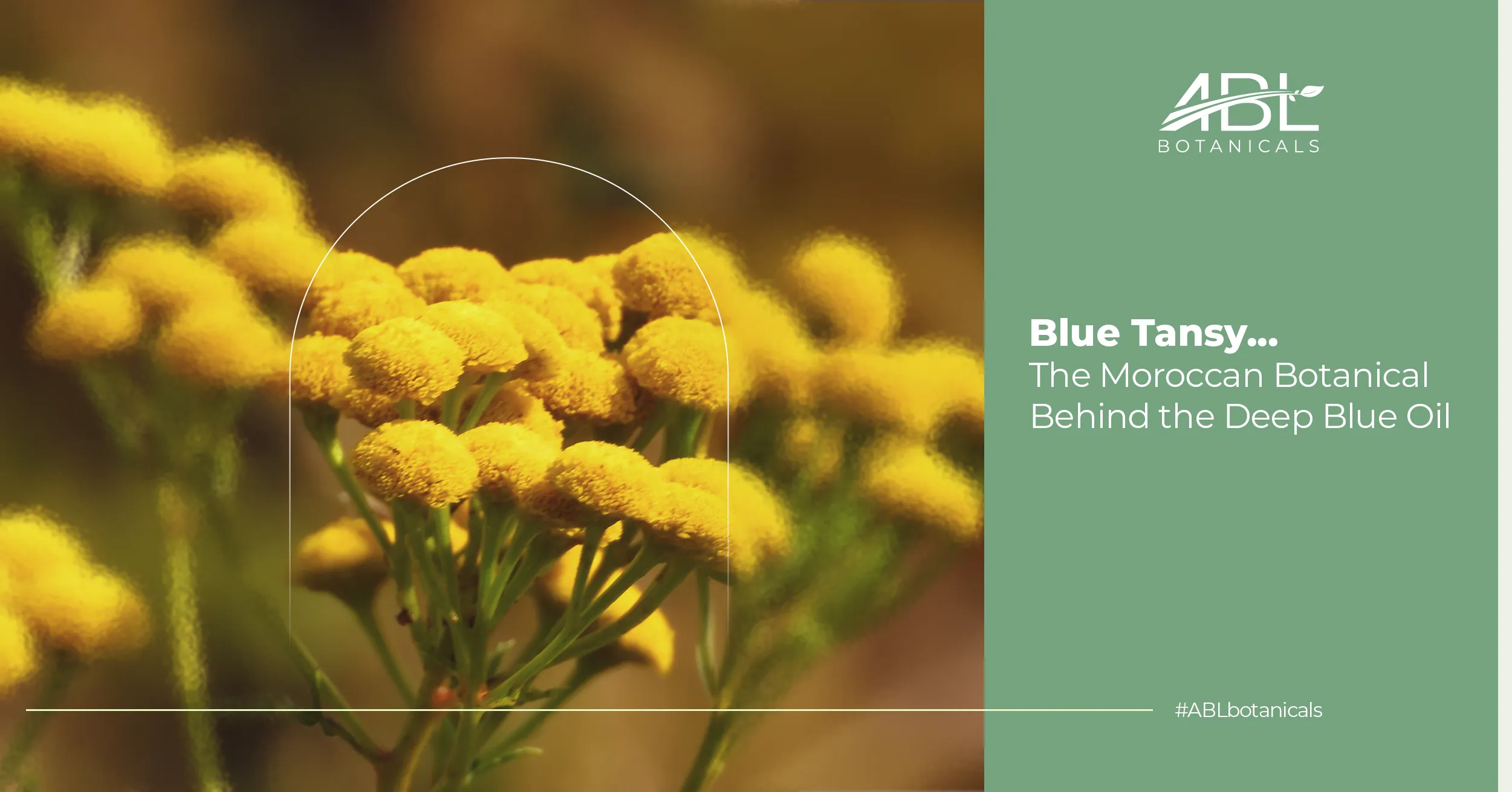Blue Tansy (Tanacetum annuum) is among the most technically distinctive essential oils in the botanical ingredient landscape—visually striking, chemically unique, and functionally potent. At ABL Botanicals, our approach to Blue Tansy goes beyond trend: we treat it as a high-value, chemotype-dependent raw material that demands precision from cultivation to distillation.
This article explores the science behind Blue Tansy’s value, the complexities of chamazulene formation, and how our Moroccan terroir and operational controls ensure batch consistency and performance.
Taxonomy & Origin: Not All Tansy is Blue
Blue Tansy (Tanacetum annuum) is often confused with common tansy (Tanacetum vulgare), which contains toxic thujone and is not used in aromatherapy. Blue Tansy, by contrast, is native to the Mediterranean basin—particularly northern Morocco—and is prized for its low-toxicity profile and high chamazulene content when properly distilled.
Its yellow, daisy-like flowers contain precursors to chamazulene, which only converts during heat exposure, a fact that makes distillation technique a critical variable in oil quality.
Why the oil is blue (and why that matters)
Chamazulene is a sesquiterpene derivative not naturally present in the raw plant. It is formed through the thermal degradation of matricin, a compound that breaks down under heat during steam distillation, typically above 90°C.
This reaction produces the characteristic deep blue color and accounts for Blue Tansy’s anti-inflammatory, antihistaminic, and antioxidant properties; effects that have been supported by published research on azulene-rich botanicals, including chamomile and yarrow.
Chamazulene content is highly variable. It depends on:
- Harvest timing
- Post-harvest handling
- Distillation temperature and speed
- Botanical chemotype and terroir
At ABL Botanicals, we track these variables across every batch, ensuring our oil reaches chamazulene levels typically between 12–20%, depending on environmental conditions.
Applications in Formulation: Why R&D Teams Use It
Due to its bioactivity and low sensitization potential, Blue Tansy is widely used in:
- Barrier repair skincare (e.g. redness-prone or inflamed skin)
- Post-treatment and recovery formulations
- Anti-stress aromatherapy blends
- Sleep and emotional balance applications
It is also compatible with low-temperature emulsions and oil-based systems where oxidative stability is a concern. Its natural scent—herbaceous with sweet, fruity undertones—adds complexity to fragrance compositions, especially in wellness and functional beauty.
Cultivation in Morocco: Why Origin Matters
ABL Botanicals grows Blue Tansy on our certified organic farms outside Marrakech, where high-altitude, mineral-rich soil and dry climate support chemotype stability and yield.
Key agricultural practices include:
- No synthetic input use (100% organic)
- Timed harvesting during early flowering for optimal matricin content
- Direct-to-distillery transport to minimize degradation
- On-site steam distillation, allowing real-time control of temperature and pressure
This vertically integrated process allows us to control not just what’s in the oil—but what’s not.
Challenges in the Blue Tansy Supply Chain
While demand has surged in recent years, quality inconsistencies, adulteration, and chemotype confusion remain common. Blue Tansy is often diluted, mislabeled, or confused with yarrow (Achillea millefolium) or German chamomile, which also produces a blue oil due to chamazulene.
- At ABL Botanicals, we provide:
- Full batch traceability from seed to shipment
- GC-MS data with every lot
- COAs with chamazulene percentage and oxidative profile
- In-house and third-party lab verification
This ensures the R&D and compliance teams have the data and reliability needed for commercial-scale use.
Blue Tansy is a chemically active, climate-sensitive plant that must be handled with technical precision. At ABL Botanicals, we treat it as a scientific material, not just a commodity. That’s what makes our Blue Tansy trusted by formulators across skincare, fragrance, wellness, and beyond.
Contact us for specifications, COAs, and bulk pricing:
sales@ablbotanicals.com

